Post and Courier
6/30/2021
Link
By the editorial staff

We’re pleased to see first-term council members Kylon Middleton and Rob Wehrman push for creating an affordable housing fund with as much as $10 million. If nothing else, it’s an encouraging sign that county leaders remain focused on trying to address our region’s worsening problem of too few affordable places to buy or rent. In short, there are many ways the county still can help, and we urge all council members to realize that this is a problem the private sector isn’t going to solve on its own and remain open to new ideas.
As The Post and Courier’s David Slade reports, the issue could be revived soon as County Council decides how to spend about $80 million in federal American Rescue Plan Act funds. And other council members have voiced other ideas, including Councilwoman Jenny Honeycutt, who suggested that large businesses, which often receive generous tax breaks when relocating in the county, could play a role. That’s certainly worth pursuing, as would be a more general approach to business groups, some of whom, as Chairman Teddie Pryor noted, supported the county’s proposal in last fall’s referendum.
As we said after last November’s vote, voters were not sending a message that they don’t want the county to spend money to address affordable housing. (The tax would have added $24 to the bill on a $300,000 owner-occupied home and $36 to the bill for a $300,000 rental or commercial property.) They wanted a more specific plan on how the county would spend the money, and without it, they narrowly rejected the tax increase to help. That is not surprising given the county’s costly missteps with plans to renovate the old Naval Hospital and to build a new recycling center.
It’s important that the county keep at it. So we are encouraged that the county budget does include money to hire a consultant to flesh out a comprehensive affordable housing plan and $142,000 for a new director of community revitalization and housing affordability position. Interested consultants are supposed to apply by July 19, and county staff and County Council should move quickly after that to choose one so work can begin in earnest. We hope the new plan provides the necessary detail for how the money would be spent — one that could garner such broad support that County Council would feel comfortable enacting it even without placing the question on the ballot in 2022.
Specifically, the county needs to identify a partner that would manage the county’s program; create guidelines or parameters for its partner as a road map, including how the program would address affordable rental units, home ownership and home repairs; and consider other steps the county should take in addition to providing financial help, such as zoning changes. The sooner those details emerge, the better.
Using some of the American Rescue Plan Act funds could be a helpful step; it would focus council members and staff to tackle the work and show council’s seriousness, which in turn would send an important signal to other potential partners.
Charleston County government is not going to single-handedly solve our affordable housing problem — which only seems to be getting worse, with fresh news weekly about one piece of it or another — but no single local government is. No single business or business group is either. But that’s no reason for the county to do nothing.
The county’s RoadWise program, an almost two-decade-long effort to spend hundreds of millions of dollars building new roads and improving existing ones, is not solving our traffic and congestion problems on its own, but we all would be worse off without it. The county can play a similar, important role to help build more affordable housing at a small fraction of the cost it’s spending on roads, but only if its leaders have the will.
Click here to view the results.
Post and Courier
Link
6/23/2021
By Mary Steurer msteurer@postandcourier.com

Dubbed The Gathering Center, it’s intended as a hub for neighborhood meetings, events and an educational and recreational space for youth. It’s also a substation for the Charleston Police Department.
The center was created from two converted housing units turned over to police by the Charleston Housing Authority last year, part of a larger effort to reduce crime in the area and improve police relations with residents.

Arthur Milligan Jr., chief operating officer for the Charleston Housing Authority, said the center will be a place where police have more face-to-face time with residents.
“We don’t want the police to be visitors,” Milligan said.
Half of The Gathering Center is set aside for neighborhood events and meetings. It will also be a resource for residents — a place where they can go for help finding jobs, for example, Staggers said.
The other is specifically for children, featuring a lounging area and rooms with desks, computers, books and board games so they can study or hang out. Staggers said the center will also have volunteers come in for tutoring and mentorship.
After the ribbon-cutting ceremony, community members and visitors toured the new facility and mingled with officers.
Pastor Bobby Prioleau, a resident of Cross, has ministered in Gadsden Green community for three years. She said she’s grateful to see new outreach to the neighborhood, and thinks the center is a space residents — especially children — will rally behind.
“I think it will enlighten the community and give them hope,” Prioleau said.
The move also comes amid demands for more community-oriented policing and other reforms after the death of Jamal Sutherland in Charleston County jail in January, and George Floyd and others by police last year. The strategy aims to promote relationships and cooperation between police and the community members.
Arthur Lawrence, former president of the neighborhood association for the West Side, said he helped gather input from families for how the center could best meet the community’s needs.
“We’ve been working for years to get the center in,” he said.
He hopes The Gathering Place will help give Gadsden Green a police presence that will help prevent crime instead of just reacting to it.
Follow Mary Steurer on Twitter @marysteurer.
The Housing Authority of the City of Charleston celebrated it’s 86th anniversary on May 5th 2021. Here are some pictures of that event which included awards for two retiring board members: Courtenay Brack and Todd Brown.







Post and Courier
5/2/2021
By David Slade dslade@postandcourier.com
https://www.postandcourier.com/news/all-public-housing-in-charleston-to-be-replaced-or-renovated-in-sweeping-initiative/article_d7aa9a52-93dd-11eb-842d-63dd1fa73cf9.html

A bold plan to renovate or replace all of the Charleston Housing Authority’s public housing has started, and it’s expected to add 800 to 1,000 affordable apartments to the city.
Existing complexes and buildings with a combined 1,407 apartments will either be extensively renovated or demolished in order to build larger buildings on the same properties.
“It’s huge,” Charleston Housing Authority CEO Don Cameron said. “It’s going to change everything.”
No low-income housing will be lost, more housing will be created, and tenants who are displaced during renovations or construction will be able to return to the same properties, Cameron said.
The most visible changes will be seen on the Charleston peninsula where some of the CHA’s apartment complexes cover multiple city blocks.
The authority owns 56 properties throughout the city — on the peninsula, West Ashley, James Island, Johns Island and Daniel Island — and one in Mount Pleasant, but the peninsula used to be the city limit and that’s where the oldest and largest complexes are located.
The renovate-or-replace initiative could take up to a decade to complete and cost hundreds of millions of dollars, but the money won’t come from CHA or local taxes. Each apartment complex or building will involve a public-private partnership funded largely through state and federal low-income housing tax credits.
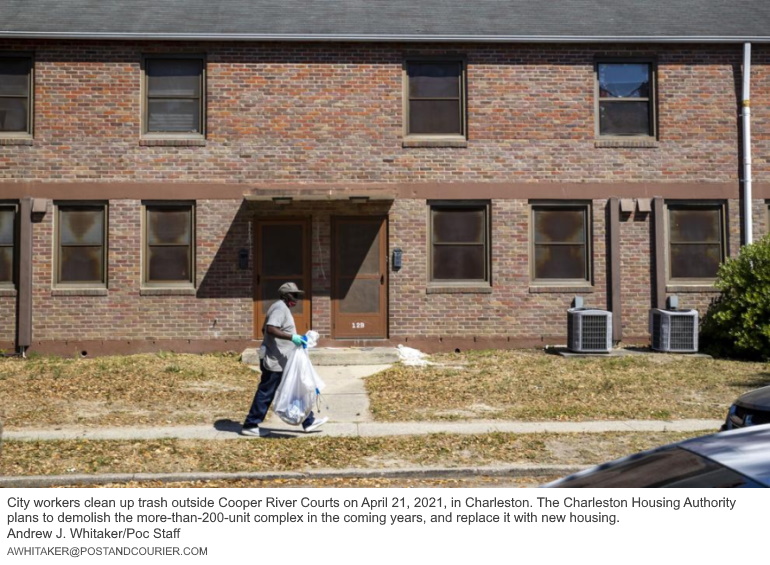
The federal Department of Housing and Urban Development created the financial framework years ago, called the Rental Assistance Demonstration program, and Congress approved it in 2012. The RAD program aimed to use tax credits to get private developers involved in building and renovating public housing, and that’s happening, but in this case the CHA will continue to own all the properties.
Work is expected to begin this year on the first two apartment complexes on CHA’s list. The 12-unit apartment buildings at 275 Huger St. will be demolished to make way for an 85-unit complex, and the 61-unit Kiawah Homes complex in Wagener Terrace will be renovated.
“We’re using this (275 Huger) as an experiment for us to learn how to do this so we can use it as a model when we get to the bigger properties,” Cameron said. “I think the trust in the community has got to be good that what we say is what we do.”
Patricia Stewart, chairwoman of the CHA’s Resident Advisory Board, said the authority’s plans have been hard to understand, creating some anxiety among tenants.
“People are still anxious about the fact that things are changing and they wonder if it will benefit them,” she said. “The people are so concerned. We’re all still waiting to see what it turns out to be.”
For years, public housing tenants and advocates have feared that the rapid gentrification seen on the peninsula would lead to public housing being eliminated. Cameron said the opposite is happening, that there will be no loss of housing and there will in fact be more.
“I think it’s a good idea as long as the residents can come back,” said Kathy Nelson, secretary of the Resident Advisory Board.
Expansive apartment complexes that have been in place on the Charleston peninsula since the 1930s or 1940s will be renovated or replaced. They include two adjacent projects — Cooper River Courts and Meeting Street Manor — that together are home to 417 families.
Those low-rise apartments occupy more than seven blocks between Meeting Street and Morrison Drive near Sanders-Clyde Elementary School.
The Housing Authority’s plan is to renovate apartment complexes that were well-built and rent well, including Meeting Street Manor and Robert Mills Manor.
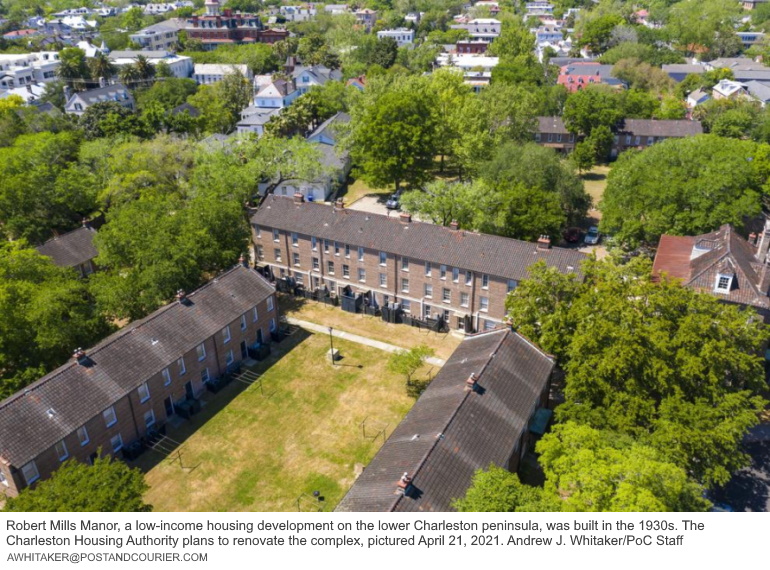
“They’re built like bomb shelters,” said Cameron, praising the quality of construction. Meeting Street Manor was built in the mid-1930s as a Works Progress Administration project and is the oldest public housing in the state.
The renovation projects are expected to cost $45,000 to $100,000 per unit, Cameron said. In most cases, some tenants will relocate during the work, but most will move from older units to newly renovated ones as work is completed.
The federal government is picking up most of the tab but in a complex and indirect way.
First, the CHA will find partners that can benefit from low-income housing tax credits — something the authority can’t do because it’s a government entity. The tax credits pay out over 10 years, but once they are approved, the developer typically sells them at a discount, usually to banks, and the proceeds fund a large portion of the costs of renovations or demolition and construction.
For example, the demolish-and-replace project at 275 Huger St. is expected to cost $23.2 million. Tax credits are expected to cover about $10 million of the cost, and rents collected over time should pay off the debt that will cover the remaining costs. The housing authority will continue to own the land and will eventually own the new buildings.
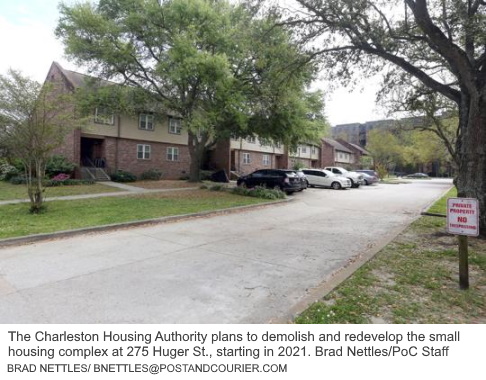
The low-income tenants that live at 275 Huger now will have the right to return when the new buildings are completed, but there will also be 73 additional apartments. Most will be for low-income tenants, but 22 would be rented at close to market rates, making the new complex more financially sustainable.
The renovated or new apartment complexes would be assigned “project-based vouchers” — federal rent supplements that are tied to those apartments. The vouchers pay most or nearly all the rent for people with low incomes, who typically contribute 30 percent of their incomes toward the rent and utilities.
Market-rate apartments that could be included in new buildings are meant to serve as “workforce housing” and are not subsidized, but there may be maximum income limits for potential tenants and the rents are typically below those on the open market. The idea is to provide housing for people with moderate incomes who work nearby.
Part of CHA’s goal is to replace some low-income housing complexes with modern apartments that will house an economic mix of tenants. The CHA already operates one such building on the peninsula, the recently built Grace Homes apartments at Meeting and Cooper streets, which has 35 income-assisted apartments and 27 workforce housing units.
At Grace Homes, unsubsidized two-bedroom workforce housing apartments rent for $1,327. Low-income apartments in the same complex are subsidized, with federal housing vouchers that pay some of the tenants’ rent and utilities — whatever amount is left after the tenant contributes 30 percent of their income.
The new CHA complex planned at 275 Huger St. will also have some workforce housing units, which won’t be subsidized but will have rents lower than those nearby, Cameron said. Just across the Huger Street, at East Central Lofts, a 731-square-foot 2-bedroom apartment rents for $1,765.

Charleston Mayor John Tecklenburg touted the CHA initiative in his recent State of the City address, saying: “We’ve given our Housing Authority the go-ahead to work with the federal government to replace or rehabilitate every public housing project in the city — an initiative that will both increase overall housing supply and give our public-housing residents a safer, cleaner, better place to live.”
Even on the Charleston peninsula, the Charleston Housing Authority does not own all of the public housing. Some apartment complexes are owned by for-profit or nonprofit companies, and they are not part of CHA’s plans.
For example, the county’s housing authority owns Joseph Floyd Manor, the troubled high-rise complex on Mount Pleasant Street. And 300-unit Bridgeview Village, the single-largest low-income housing complex on the peninsula, is owned by nonprofit Housing on Merit and managed by Standard Communities.
The plan to renovate or replace all of CHA’s public housing units is set to begin later this year with the one demolition and replacement project and one renovation. Kiawah Homes will be the first. The work at 275 Huger St. will take longer because a new building must be designed and permitted, so residents there will not move out before the start of 2023.
Kiawah Homes was built in 1942 and is a collection of duplexes. Extensive renovations there are expected to cost about $100,000 per unit, Cameron said, and could begin in August.
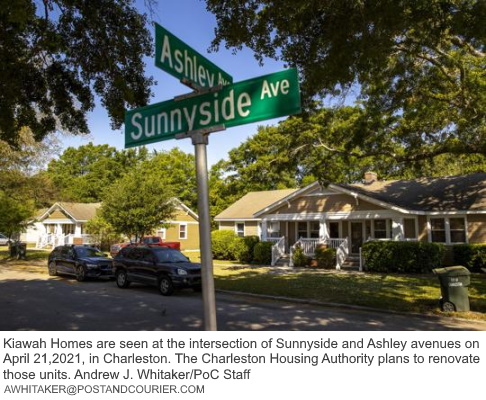
He said counselors have met with all the residents there to explain what will happen; mainly that some residents — maybe a third of them — will be relocated during renovations while others will move within the complex as renovations are completed.
When the Kiawah Homes and the 275 Huger St. projects are done, the housing authority can take what was learned from those first efforts and move on to some of the more than 1,300 apartments remaining.
By the end of the year, CHA hopes to be seek a developer for work on the demolition and replacement of Cooper River Courts.
Reach David Slade at 843-937-5552. Follow him on Twitter @DSladeNews.
THE CHARLESTON HOUSING AUTHORITY CELEBRATED ITS 86TH ANNIVERSARY ON MAY 5 WITH A BOXED BARBECUE LUNCH FROM RODNEY SCOTT BARBECUE, AND RECOGNITION OF TWO RETIRED COMMISSIONERS FOR OVER 20 YEARS OF PUBLIC SERVICE.
COURTENAY NEFF BRACK, FORMER BOARD CHAIR, AND MR. TODD C. BROWN, FORMER FINANCE COMMITTEE CHAIR, WERE PRESENTED WITH FRAMED RESOLUTIONS MEMORIALIZING THEIR 20 YEARS OF FAITHFUL LEADERSHIP TO THE AUTHORITY BY CURRENT CHAIR, MR. EDWARD KRONSBERG.
THE 100 EMPLOYEES OF THE HOUSING AUTHORITY WERE A SEA OF BLUE AS ALL WORE THE 85TH ANNIVERSARY T-SHIRTS, AS LAST YEAR’S CELEBRATION WAS CANCELLED DUE TO COVID-19 RESTRICTIONS.
IN CLOSING THE PROGRAM, DONALD J. CAMERON, PRESIDENT & CEO, PRESENTED ALL ATTENDEES WITH A BEIGE BASEBALL CAP WITH 85+ ON THE FRONT. THE + (PLUS) WAS TO REMIND EACH EMPLOYEES TO ASPIRE TO DO MORE, TO NOT JUST MEET STANDARDS BUT TO EXCEL DAILY IN EVERY TASK THEY UNDERTAKE.
FOR MORE INFORMATION, CONTACT:
DONALD J. CAMERON
PRESIDENT & CEO
843-720-2920
THE HOUSING AUTHORITY OF THE CITY OF CHARLESTON ANNOUNCED IT IS ENTERING INTO NEGOTIATIONS WITH PALMETTO REDEVELOPMENT PARTNERS TO REPLACE TWELVE (12) PUBLIC HOUSING APARTMENTS AT 275 HUGER STREET WITH 85 MIXED INCOME APARTMENTS TO INCLUDE A ONE TO ONE REPLACEMENT OF THE ORIGINAL TWELVE.
THIS VENTURE ESTIMATED TO COST $23.2M WILL RESULT IN A NET GAIN TO THE CITY’S INVENTORY OF AFFORDABLE UNITS
THE PLANS CALL FOR:
THIS IS THE SECOND ASSET THE AUTHORITY IS REDEVELOPING AS PART OF ITS STRATEGIC PLAN TO REWORK ITS PUBLIC HOUSING PORTFOLIO OF 1407 APARTMENTS UNDER THE HUD RENTAL ASSISTANCE DEMONSTRATION PROGRAM.
FOR MORE INFORMATION, PLEASE CONTACT:
DONALD J. CAMERON
djc@chacity.org
(843)209-9834
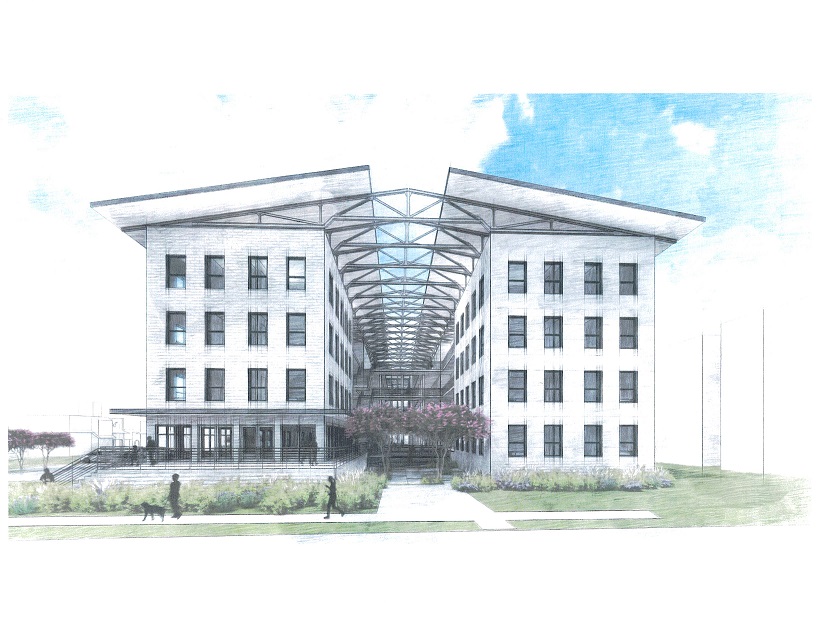
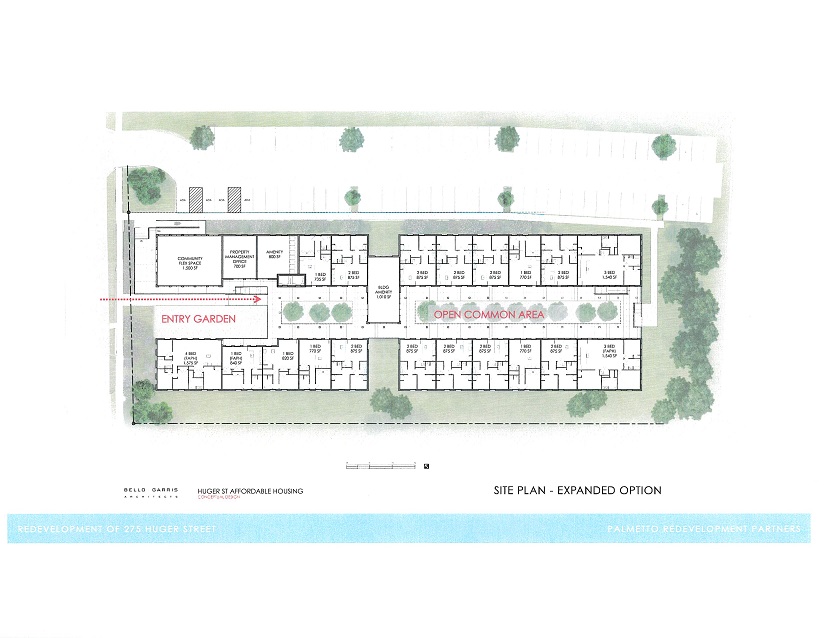
The Housing Authority of the City of Charleston was established in 1935 after a declaration of need by the City Council of Charleston. The mission is to provide decent, safe, sanitary and affordable housing to low and moderate-income citizens of the City of Charleston.
Over 4,000 homes, roughly 9.2% of the population of the City of Charleston, are occupied by families who receive housing assistance through the Housing Authority. With an average 98 percent occupancy rate, the Housing Authority of the City of Charleston provides homes to over 7,500 adults and children. Because the Charleston Housing Authority owns the homes, rental rates are not as susceptible to market forces and rising property values, allowing the homes to remain affordable.
Many of the Housing Authority’s homes are indistinguishable from the surrounding neighborhoods. Over the past thirty years, new construction, as well as renovations, have taken place to assure both affordability and attractiveness. Specifically, the Housing Authority has produced more than 1,000 units of affordable, unsubsidized housing in the City of Charleston and assisted in fostering the construction of almost one thousand additional apartments by not-for-profit developers. Most recently, the Housing Authority completed two new housing developments on the peninsula: Williams Terrace, housing for seniors, and Grace Homes, modern one, two, and three-bedroom apartments; adding over one hundred additional affordable residences.
In order to continue to provide much needed additional affordable housing, and to further decrease its dependency on federal dollars, the Housing Authority has embarked on a development strategy, which had been utilized successfully in other cities, for the conversion of its Department of Housing and Urban Development (HUD) housing through the Rental Assistance Demonstration (RAD) program. RAD was created to give public housing authorities (PHAs) a method to preserve and improve public housing properties by creating partnerships and agreements with private companies to facilitate the financing of improvements and deferred maintenance projects. Part of the process involves maintaining public stewardship by requiring ongoing ownership/control of the converted property by a public or non-profit entity affiliated with the PHA. Some of the land may in instances be leased to the partnership to qualify for tax credit equity while assuring that the housing authority maintains ownership of the land, and continued management of the residences.
The RAD program is a nationwide program, enacted in 2012, through HUD. As of November, 2020, the RAD program has generated over $10 billion in construction investment for the improvement and replacement of 140,000 units of affordable housing throughout the United States. In 2019, the Housing Authority of the City of Charleston decided through Board resolution to utilize the RAD program after seeing that the backlog of nationwide public housing capital needs was estimated at over $35 billion. Through the RAD program, the Housing Authority plans to completely renovate most its 1,407 public housing units. In instances where feasible, the Authority also plans to reposition some units to allow for the construction of additional affordable housing units, effectively adding to its overall affordable housing stock. RAD allows for Public Housing units to move to a Section 8 based platform with a long-term contract. To do this, a limited liability partnership is typically created for each site conversion between a non-profit entity affiliated with the Housing Authority and a private investor. Some residents will be temporarily relocated during the renovation/repositioning period and will either move to available units or receive rental support during the relocation. Once renovation/repositioning is complete residents will receive assistance through a Section 8 based voucher program.
The program allows the Authority to accomplish these goals without selling its land and while still maintaining these residences. The process is expected to take approximately five to seven years to convert the whole portfolio but the Housing Authority has successfully procured both its debt and equity partners for its first RAD project, Kiawah Homes, which is estimated to cost $12 million to renovate 61 units, using a mix of state and federal tax credits, tax exempt bonds, and long-term financing. The Housing Authority plans to close on the financing of this project in fall of this year. To learn more about the Housing Authority of the City of Charleston, please visit www.chacity.org.
If you have any questions, please contact:
Donald J. Cameron
President & CEO
843-727-3167